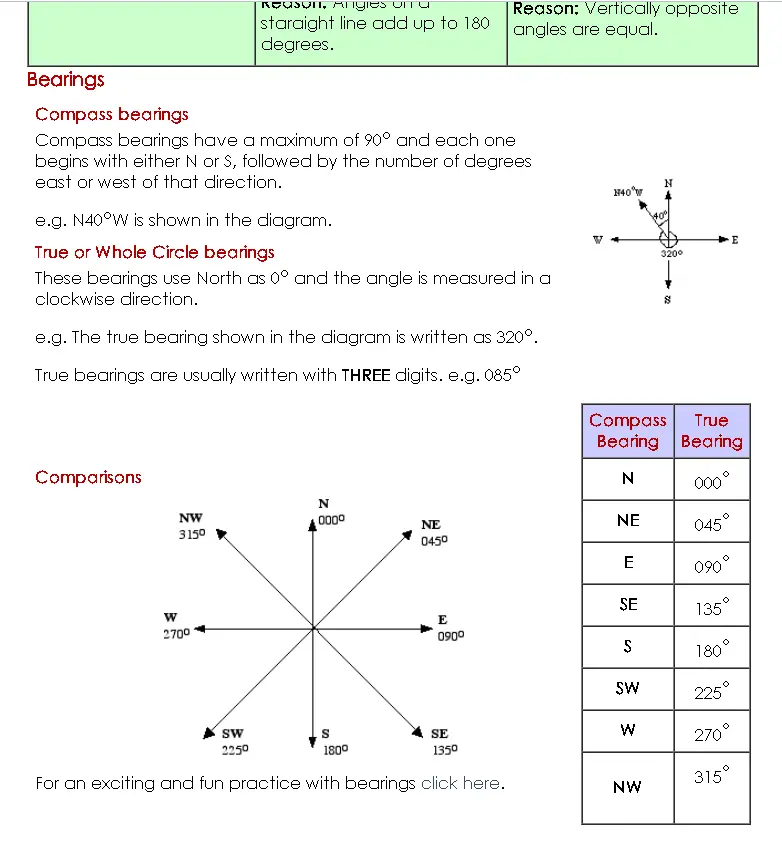What are the Bearings?
A bearing tests the angle shift toward the north and always on the north line. The point is related in a clockwise direction to the middle of the compass by means of the distance determined in degrees. In navigation, covers are used to show direction. This also shows a specific feature in an angle.
Characteristics
- The base of a bearing is northward
- It always scales in the right direction
- It is written in three digits.
Check out also: CONGRUENCE AND SIMILARITY
Compass Bearings
Compass covers have a limit of 90 degrees, each starting from either N or S, and then from either the east or west, the number of degrees.
True or whole circle bearings

These bearings use North as 0o and the angle is measured in a clockwise direction.
e.g. The true bearing shown in the diagram is written as 320o.
True bearings are usually written with THREE digits. e.g. 085o
Example 1
- Just guess you’re in the middle of the ocean on an island. You got a radio to ask help. You have got a 135-degree alert. Where’s the 135 ° C?
- Draw a box from the base, facing the north line always.
- It is 090 ° in the east, 180 ° in the south, and 270 ° in the west. It is going to be between the south and the east.
- The blue line is nearly 135 ° while the angle is 135 °.
Check out also: MATRIX
Example 2
The first ship is leaving the port and is 20 kilometers long, on a 0f 260 ° bearing. A second container, too, is leaving the same port and is 14 kilometers heading on a 190 ° bearing. How far are the two vessels apart?
- Let’s label as point C the starting point or the port.
b. The angle ACB = 250° + 190° = 60°
c. From the port (C) to the location of the first ship (A) is 20 km. The second ship (B) from the port (C) is 14 km.
d. We will now use the cosine law:
c2=a2+b2–2abcosC
c2=142+202–2(14)(20) cos60°
c=17.78km


